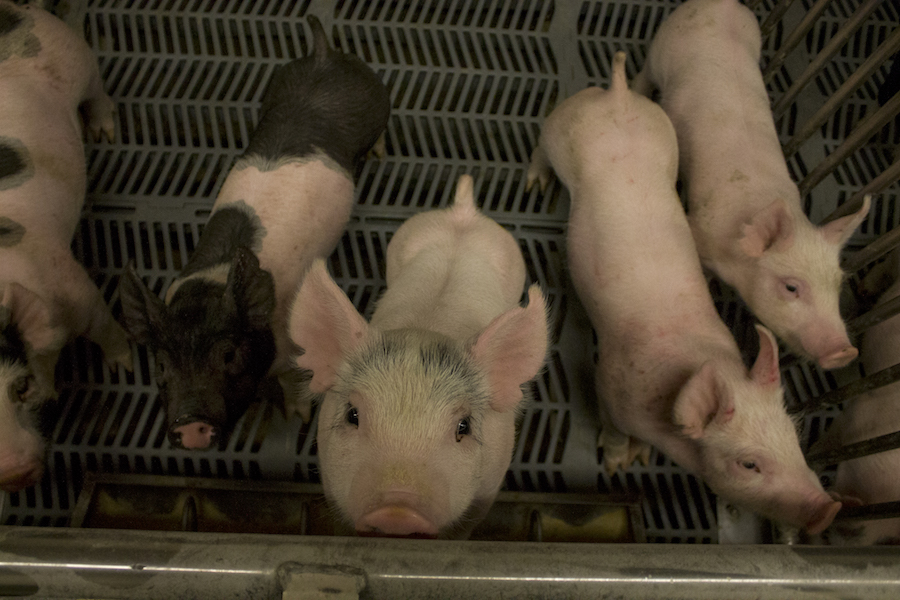
Reprogramming cells, gene editing contribute to the latest organ transplant research
Approximately 22 people die each day out of the staggering 119,000 plus people on the national transplant waiting list, according to the US Department of Health and Human Services. While 48 percent of adults in the US are registered organ donors, only 0.3 percent of them will pass in a way in which their organs can be repurposed.
Pablo Juan Ross, an associate professor of animal science at UC Davis, is working to grow organs from the patient’s own stem cells inside the body of a sheep or a pig.
Conducting an en vivo study, or a study inside of a living organism, is a complicated process. Ross said that in addition to obtaining the right kinds of permission, doing a study involving chimeras — single organisms comprised of cells of at least two different species — can make procuring funding harder. However, Ross believes that the results of an en vivo study will be worth the extra effort.
“[From studies that are] en vitro or ‘in the dish’, in general, we get very primitive, immature cells that are not good for transplantation,” Ross said. “And, of course, we’re limited to only creating cells. Creating organs, creating the 3D [structures] that are required for a transplant for an adult is, right now, something that’s out of our possibilities”.
The process of creating a custom organ would, hypothetically, go as follows: first, Ross would obtain cells from the patient that needs the transplant, a process which could be as simple as taking a few skin cells. Then, Ross would express key genes in the skin cells, reprogramming them into pluripotent stem cells, or cells that have the capacity to become any cell in the body.
If Ross were to inject these stem cells into an early pig or sheep embryo, it would be hard to predict where the cells would be used in the animal. The pig cells have what Ross referred to as a “home field advantage” so they would likely outcompete the human cells in most places. The possibility of uncontrolled mixing of human and animal cells, however, would create a large ethical problem.
To help the visiting team, Ross would use gene editing techniques to “edit out” the genes necessary for the formation of a key organ which, in Ross’ case, is a pancreas. This gene editing would ‘edit out’ the competition because the pig or sheep would not have the genes or blueprints necessary to build itself a pancreas, so the human stem cells could step in relatively unchallenged.
After Ross completes the process of gene editing and injecting the stem cells into the embryo, the embryo would be placed back into its mother, allowed to grow and birth naturally, and once the organ of interest matures and develops to the proper size, it would be harvested.
As of right now, most of this process is theoretical. Ross’ research is two pronged. One field of investigation deals with the problem of completely eliminating the genes for the pancreas using CRISPR, or gene editing technology. The other investigative field is trying to narrow down the best type or state of human pluripotent stem cells to use for this research. Some research is already being done inside animal models.
Elizabeth Maga, an adjunct professor in the Department of Animal Science, is also involved in the project. According to Maga, the research is being done cautiously to avoid any possible ethical issues.
“Right now, we’re going slowly because people aren’t sure if the human cells will migrate to other places in the pig, not just contribute to the organ that has been knocked out by the CRISPR technology,” Maga said. “We only have approval from campus to have the pigs be pregnant for 26 or 28 days because after that time of development the brain starts forming, and so the concern was if there were loose human cells in there, they could contribute to the development of other tissues, mainly the brain, and what would be the implications of that.”
Joan Dean Rowe, a professor of population health and reproduction at the UC Davis School of Veterinary Sciences, performs the embryo reinsertion surgical procedures on the pigs involved in the study.
“The transfer of the embryos [is] a surgical procedure that involves a small incision, then the exteriorization of the uterus and then introduction of the embryos into the uterine horn,” Rowe said. “The novel aspect of the research is, of course, Dr. Ross’ procedures with the embryos. Relative to the recipient — the sow that’s receiving the embryos — the embryo transfer procedure […] is one that is very well established and is a very routine procedure”.
While Ross’ research is innovative for combining gene editing and pluripotent stem cells in the form of a chimera, according to Rowe, research regarding chimeras has been commonplace at UC Davis for some time.
“The Department of Animal Science and the School of Veterinary Science have a long history of participation in research involving chimeric animals. For example, sheep and goat chimeras that were used to study some of the basic physiologic questions,” Rowe said. “These kinds of studies to help benefit man and animal, and understand physiological processes [have] been going on literally for decades at the university.”
Written by: Meral Basit – science@theaggie.org



